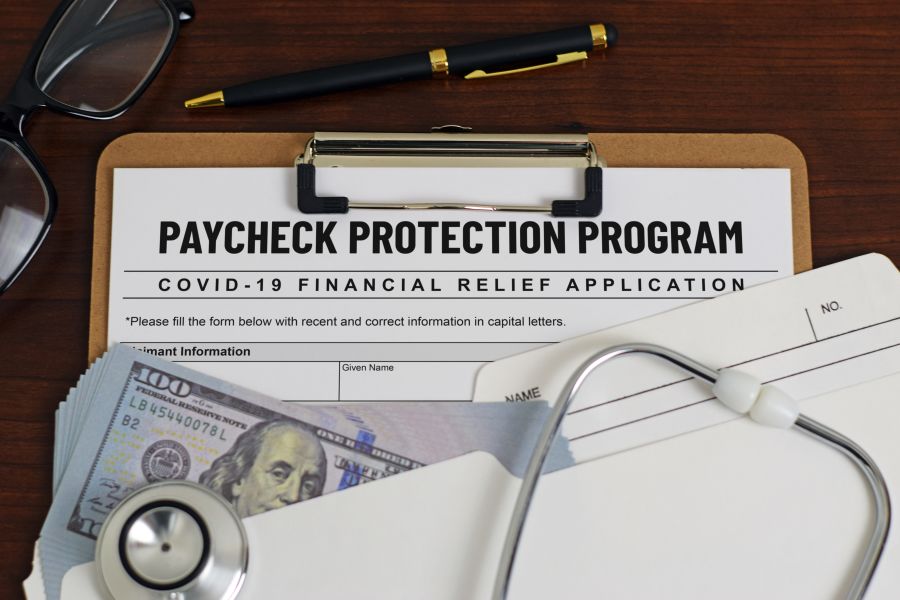Many businesses that have been severaly impacted by the coronavirus (COVID-19) will qualify for two new employer tax credits - the Credit for Sick and Family Leave and the Employee Retention Credit. Sick and Family Leave Credit for Sick and Family Leave An employee who is unable to work (including telework) because of coronavirus quarantine or self-quarantine or has coronavirus symptoms and is seeking a medical diagnosis, is entitled to paid sick leave for up to ten days (up to 80 hours) at the employee’s regular rate of pay, or, if higher, the Federal minimum wage or any applicable State or local minimum wage, up to $511 per day, but no more than $5,110 in total. Caring for someone with Coronavirus An employee who is unable to work due to...

Do you own a business but haven’t gotten around to setting up a tax-advantaged retirement plan? Fortunately, it’s not too late for setting up a SEP Plan for 2019 and reducing your 2019 tax bill. A Simplified Employee Pension (SEP) can still be set up for 2019, and you can make contributions to it that you can deduct on your 2019 income tax return. Even better, SEPs keep administrative costs low. Deadlines for contributions A SEP can be set up as late as the due date (including extensions) of your income tax return for the tax year for which the SEP first applies. That means you can establish a SEP for 2019 in 2020 as long as you do it before your 2019 return filing deadline. You...
If you’re the owner of an incorporated business, you probably know that there’s a tax advantage to taking money out of a C corporation as compensation rather than as dividends. The reason is simple. A corporation can deduct the salaries and bonuses that it pays executives, but not its dividend payments. Therefore, if funds are withdrawn as dividends, they’re taxed twice, once to the corporation and once to the recipient. Money paid out as compensation is taxed only once, to the employee who receives it. However, there’s a limit on how much money you can take out of the corporation this way. Under tax law, compensation can be deducted only to the extent that it’s reasonable. Any unreasonable portion isn’t deductible and, if paid to a...
If you’re a business owner, be aware that a recent tax law extended a credit for hiring individuals from one or more targeted groups. Employers can qualify for a valuable tax credit known as the Work Opportunity Tax Credit (WOTC). The WOTC was set to expire on December 31, 2019. But a new law passed late last year sees WOTC extended through 2020. Generally, an employer is eligible for the credit for qualified wages paid to qualified members of these targeted groups: members of families receiving assistance under the Temporary Assistance for Needy Families program, veterans, ex-felons, designated community residents, vocational rehabilitation referrals, summer youth employees, members of families in the Supplemental Nutritional Assistance Program, qualified Supplemental Security Income recipients, long-term family assistance recipients, and long-term unemployed...
Did you know that PPP loan forgiven expenses aren't deductible? The IRS has issued guidance clarifying that certain deductions aren’t allowed if a business has received a Paycheck Protection Program (PPP) loan. Specifically, an expense isn’t deductible if both: The payment of the expense results in forgiveness of a loan made under the PPP, and The income associated with the forgiveness is excluded from gross income under the Coronavirus Aid, Relief, and Economic Security (CARES) Act. PPP basics The CARES Act allows a recipient of a PPP loan to use the proceeds to pay payroll costs, certain employee healthcare benefits, mortgage interest, rent, utilities and interest on other existing debt obligations. A recipient of a covered loan can receive forgiveness of the loan in an amount equal to...
The $2.2 trillion Coronavirus Aid, Relief, and Economic Security Act (CARES Act) delivers meaningful tax relief to individuals and businesses. Some of that relief is retroactive, which can affect 2018 and 2019 returns that have already been filed. One retroactive provision can, in some cases, go all the way back to 2013. Here is a summary of the CARES Act retroactive COVID-19 tax relief measures that can potentially benefit you or your business entity after amended returns have been prepared and filed. Taxpayer-friendly Rules for Deducting Net Operating Losses (NOLs) Business activities that generate tax losses can cause you or your business entity to have an NOL for the year. The CARES Act significantly liberalizes the NOL deduction rules and allows NOLs that arise in 2018–2020 to be...
Congratulations on receiving your Paycheck Protection Program (PPP) loan! We hope it provides much needed cash during these uncertain times. Now that you have the funds, here are some best practices for PPP loan forgiveness over the next 8 weeks to ensure maximum retention. Use the Funds for Forgivable Purposes Best practices for PPP loan forgiveness revolve largely on whether you use the money to pay forgivable expenses. These include: payroll costs (if you’re self-employed, these costs include the net profit amount from your business, as reported on your 2019 tax return), interest payments on mortgages incurred before 2/15/20, rent payments on leases dated before 2/15/20, and utility payments under service agreements dated before 2/15/20. However, according to the Small Business Administration (SBA), not more than 25% of...
If you’re self-employed and work out of an office in your home, don't forget the availability of home office deductions. However, you must satisfy strict rules. If you qualify, you can deduct the “direct expenses” of the home office. This includes the costs of painting or repairing the home office and depreciation deductions for furniture and fixtures used there. You can also deduct the “indirect” expenses of maintaining the office. This includes the allocable share of utility costs, depreciation and insurance for your home, as well as the allocable share of mortgage interest, real estate taxes and casualty losses. In addition, if your home office is your “principal place of business,” the costs of traveling between your home office and other work locations are deductible transportation expenses,...
Do you conduct your business as a sole proprietorship or as a wholly owned limited liability company (LLC)? If so, you’re subject to both income tax and self-employment tax. There may be a way to reduce tax with an S corporation. Self-employment tax basics The self-employment tax is imposed on 92.35% of self-employment income at a 12.4% rate for Social Security up to a certain maximum ($137,700 for 2020) and at a 2.9% rate for Medicare. No maximum tax limit applies to the Medicare tax. An additional 0.9% Medicare tax is imposed on income exceeding $250,000 for married couples ($125,000 for married persons filing separately) and $200,000 in all other cases. Similarly, if you conduct your business as a partnership in which you’re a general partner, in addition...
When you make the decision of going into business for yourself, you'll find that many people who launch small businesses start out as sole proprietors. Here are nine tax rules and considerations involved in operating as that entity. 1. You may qualify for the pass-through deduction. To the extent your business generates qualified business income, you are eligible to claim the 20% pass-through deduction, subject to limitations. The deduction is taken “below the line,” meaning it reduces taxable income, rather than being taken “above the line” against your gross income. However, you can take the deduction even if you don’t itemize deductions and instead claim the standard deduction. 2. Report income and expenses on Schedule C of Form 1040. The net income will be taxable to...











